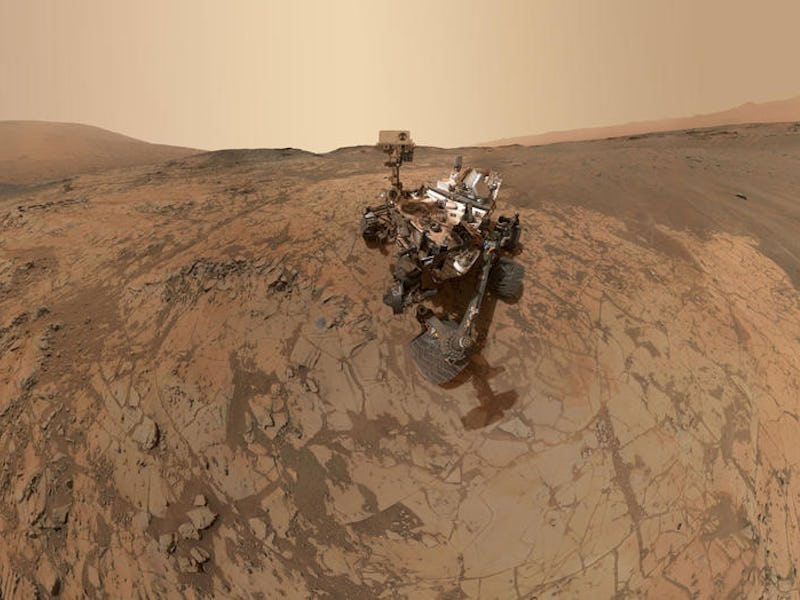NASA's Curiosity Can Now Laser Rocks Autonomously on Mars
Curiosity's newfound freedom could help the Mars 2020 rover land.

Out on Mars, Curiosity is going rogue — with NASA’s permission.
NASA announced on Thursday that the Jet Propulsion Laboratory has uploaded new software onto Curiosity that allows the rover to choose rocks to analyze without input from scientists on Earth. This is the first time that a rover has been able to choose laser targets on its own, which creates an easier workflow for the Curiosity team. Curiosity’s newfound freedom could be instrumental in preparing for the Mars 2020 rover mission, which will incorporate autonomous technology.
The Mars 2020 rover is an updated version of Curiosity. Its new specs and instruments include a more autonomous landing system and an upgraded laser spectrometer. The laser is used to measure the composition of rocks, which Mars 2020 will use to look for signs of life.
Curiosity’s latest software upgrade allows it to use its lasers to take pictures of rocks when it’s out of connection with Earth. Basically, when it loses contact with the team on Terra, it’ll continue to trundle around zapping rocks instead of waiting around for new instructions. This gives the rover the ability to get more data and decreases the delay in communicating its location to NASA. By sending pictures automatically, the team on Earth gets a heads up on where Curiosity is so they can better plan operations.
The new software allows Curiosity to chose the to analyze a point on the terrain to analyze (marked with a yellow dot) and focus to get the laser analysis on the right.
It also turns out Curiosity is actually a lot better at some of its tasks than its human operators are. NASA’s team can now direct the rover toward a vein of rock, and let Curiosity’s software focus the laser. The rover should be able to get good images on the first attempt, instead of waiting for the team to fine-tune the laser manually. The criteria for finding a laser target can be adjusted by the team on Earth over time, giving them a way to work out the bugs.
This upgrade is NASA’s best way of field testing potential problems with autonomous systems on Mars before the 2020 rover gets there. This is particularly important as Mars 2020 features an autonomous landing system will evaluate the terrain and deploy its entry parachute depending on what it sees. If there’s a glitch in running autonomous terrain evaluation on Mars, Curiosity is NASA’s best bet for finding it before Mars 2020 relies on the technology to land.